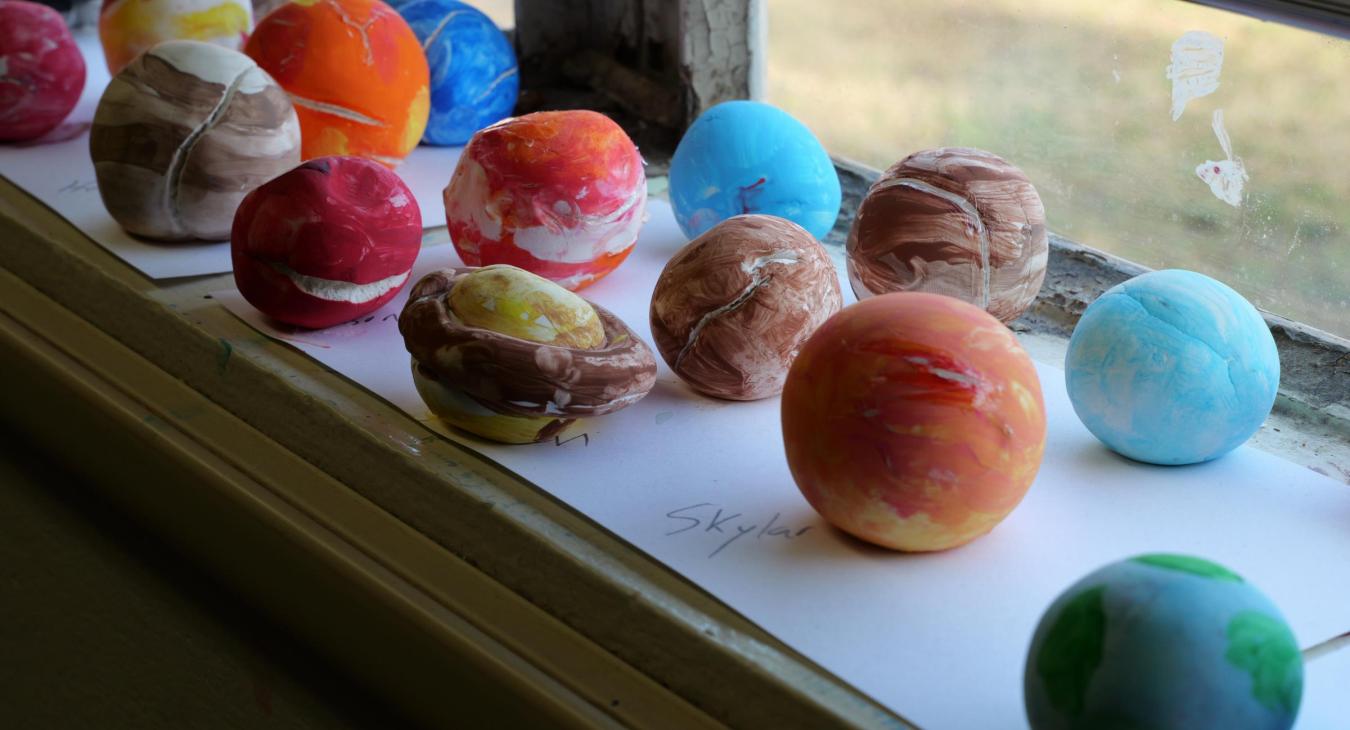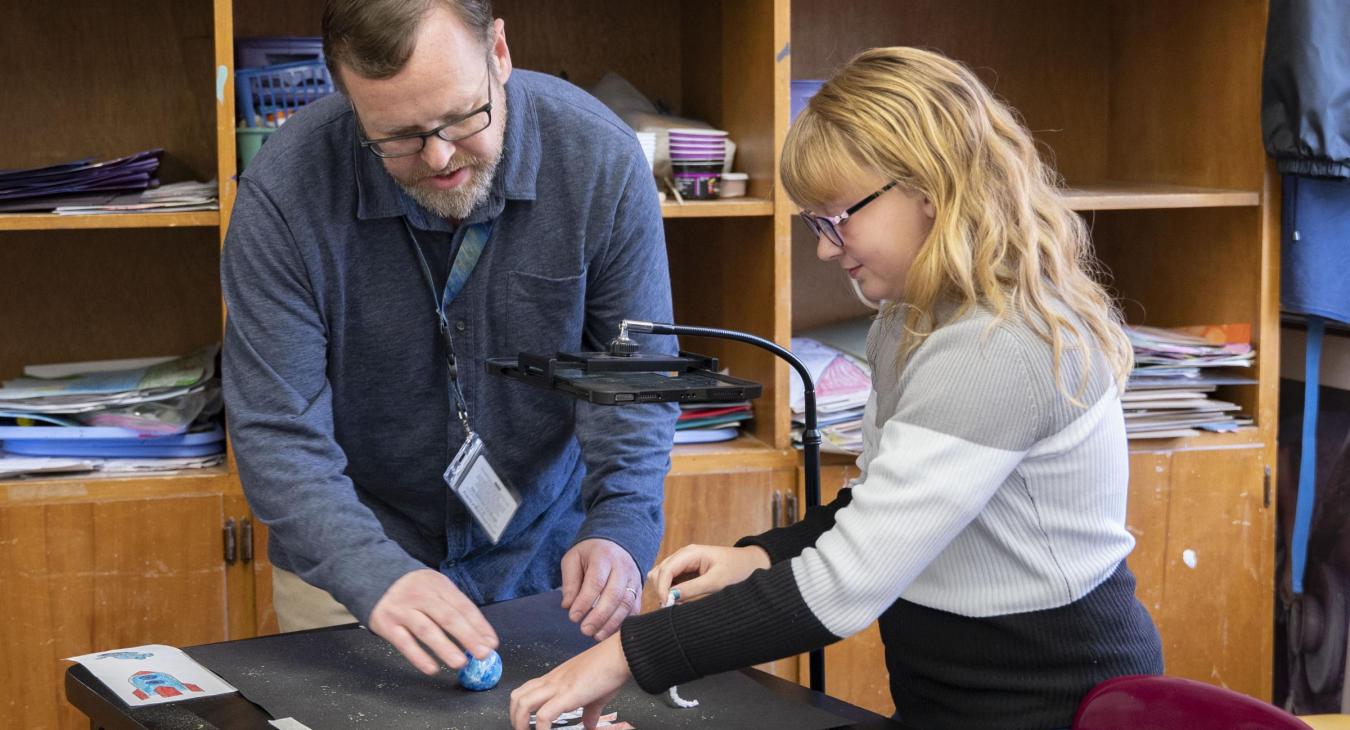Painting in Mr. Manning's art class
Spotlight on a Bright Idea:
Wayne Manning’s Art Class Connects Students to Core Classes, Technology and Community
For the past 29 years, Randolph EMC has demonstrated our commitment to education by sponsoring the Bright Ideas education grants in K–12 classrooms of public, charter and private school teachers. During this time, Randolph Electric has invested more than $300,000 in innovative projects that have benefited students in our five-county area.
In the 2022 grant cycle, Wayne Manning, STEAM (Science, Technology, Engineering, Art and Math) instructor at Westmoore Elementary School in Seagrove, NC, won a Bright Ideas grant for his project on animation and ceramics. His art projects involved stop-motion animation, engineering skills, plot development for narrative storytelling as well as hand-building clay pottery.
By teaching children how to engage with various art materials, Manning demonstrated how students learn valuable lessons in their English, science and math classes. The students benefited from the hands-on learning process while Manning reinforced concepts from their other core subjects.
Through the grant, Randolph EMC provided materials including an iPad, tripod, clay and glaze. These supplies became the building blocks for hands-on learning experiences in the art classroom. By teaching children how to engage with these materials, Manning reinforced valuable lessons from their core subjects of English, science and math.
Third graders learned about each of the planets in the solar system through hands-on clay building activities.
Students in kindergarten through eighth grade participated in Manning’s Bright Ideas projects. Westmoore Elementary is located on Pottery Highway NC 705 in the Seagrove area, and some of the children are related to working potters in the community. Because very few of the students have had the opportunity to study pottery themselves, Manning’s class was a special treat.
On a school day in March, students explained the impact the projects had on their understanding of science, math, English and technology concepts.
“My favorite part so far has been painting the clay planets that I made,” said Cara, a third-grade student in Manning’s art class. Cara’s planets included Venus, Jupiter and Mars.
“I liked learning about the planets and then making a movie,” said Alyssa.
“Yes, making the animation is my favorite part,” said Caden, who loves math. “I am looking forward to making the movie. I have never done that before.”
“Students assimilate knowledge from science class about the solar system with the clay project,” said Manning. “Next, they will tell a story using logical narration to make the stop-motion animation movie. This blends technology training with English skills, so they can demonstrate how plot and timing work together to make a movie.”
The animation portion of this project focused on space science for the students. In each movie, a student’s small astronaut and spaceship models propelled through space and then visited one of their planet creations.
Kindergarten students, also, made stop animation movies about what antics snowmen might get up to at night. Eighth graders had already learned about heat transfer in science class. These students taught Manning how convection worked by animating movies through Claymation. You can view these and other imaginative creations on our Vimeo channel.
“Here, students can work with their hands, starting with just a ball of clay to create something amazing,” said Manning. “I want to motivate them to increase their critical thinking skills by having memorable learning experiences in the classroom.”
If you know of an educator whose classroom would benefit from an innovative learning opportunity, please tell him or her to apply for a Bright Ideas education grant of up to $2,000.
Applications and more information about the program can be found at NCBrightIdeas.com.



